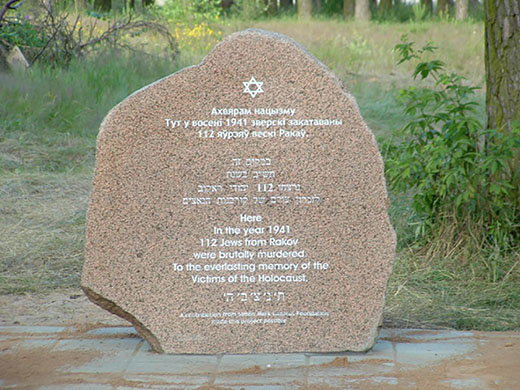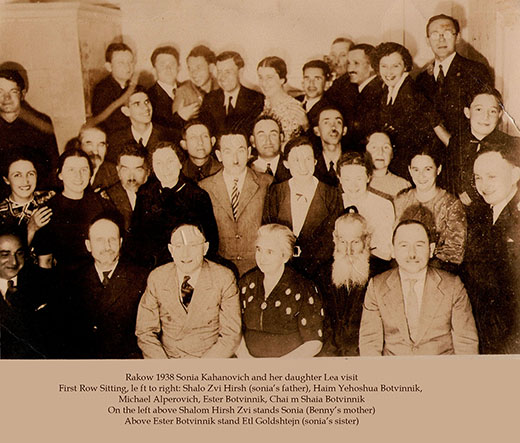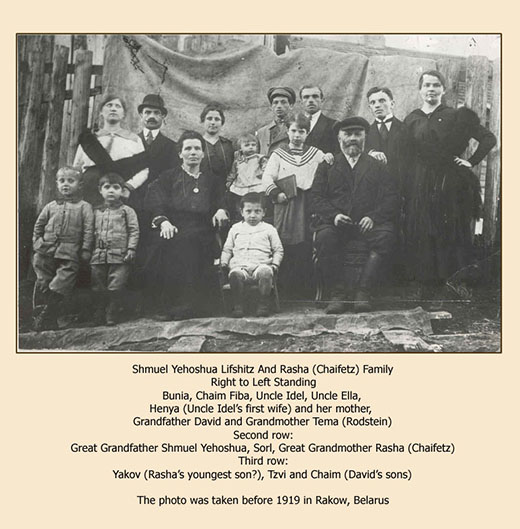HOLOCAUST
Testimony
by
Uri Finkel
Translation by Sonia Kovitz
Uri Finkel wrote this account of events under the German occupation in Rakov (Minsk District) immediately after the war. Finkel was born in Rakov in 1896, son of the last rabbi of Rakov, R’ Hirsh-Shlomo Finkel, who was murdered by the Nazis. Finkel survived the war years in the Soviet Union. Returning to Rakov in 1945, he found among his father’s belongings a precious historical record [pinkes] in Hebrew, The Rakov Jewish Congregation from 1810 to 1913, to which he appended his own account written in Yiddish. Finkel safeguarded both documents throughout his life. After his death in Minsk in 1957, these documents were transferred to the Israel State Archives. [Translator’s note]
( ): parentheses are those of the author
[ ]: brackets indicate notes added by the translator
{ }: undecipherable
____
I found this record [The Rakov Jewish Congregation from 1810 to 1913] among the sheymes [pages of sacred writings] scattered in the attic of my father’s home. It was all that remained of the cultural objects of value once possessed by our Jewish community.
On Yom Kippur of 1941 the fascist murderers drove the entire Jewish population of Rakov to the marketplace. They made them bring all the books, Jewish, Hebrew, religious and worldly, along with the sefer-toyres, and burned them. For an entire day the Jewish cultural treasures of the shtetl burned. The Jews had to stand over the bonfire, dance, jump, and sing; those who could not do this were shot on the spot.
The fire and smoke from the burning were visible far from the shtetl. In one day no fewer than 16,000 books burned and a couple hundred sefer-toyres, among them neviim [writings of the prophets] and megilles [scrolls]. Our Jewish library that had existed from the early 1900s, covering several centuries, possessed more than 30,000 volumes of Judaica (in Yiddish, Hebrew, Russian, Polish, German), and 10,000 Russian and Polish books.












